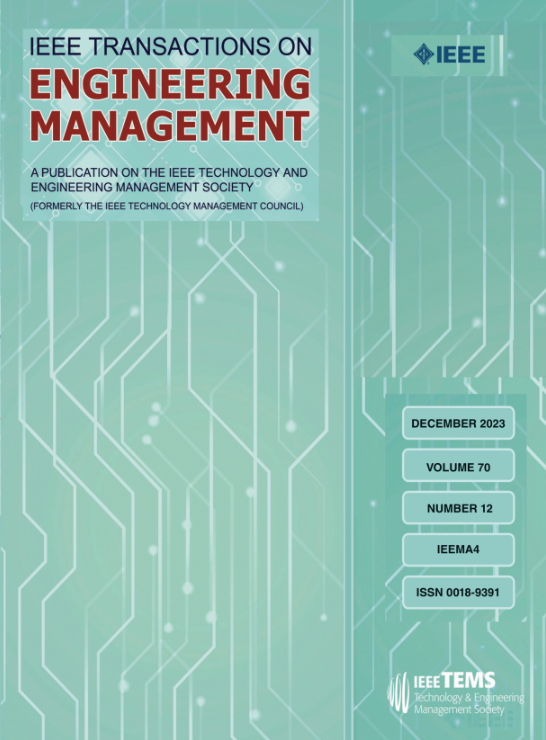复杂产品和系统的赶超:中国装备制造业的模糊集定性比较分析
IF 4.6
3区 管理学
Q1 BUSINESS
引用次数: 0
摘要
中国复杂产品与系统(CoPSs)企业的快速发展标志着它们进入了后追赶阶段,这对传统的追赶理论提出了挑战。在本文中,我们采用了一种构型方法来探讨赶超环境与战略之间错综复杂的关系,尤其关注国有企业(SOE)和非国有企业(Non-SOE)在CoPS领域的不同发展路径。我们的研究利用模糊集定性比较分析和欧盟工业研发(R&D)投资记分牌(2017-2020年)及相应中国上市公司的数据,确定了国有企业的不同追赶配置,其特点是 "复杂性采纳 "和 "复杂性破解 "模式。相比之下,非国有企业在战略适应环境变化方面遇到了挑战,这影响了它们的赶超战略。我们的研究结果强调了战略调整与外部条件、技术学习和资源利用在实现 CoPS 成功赶超中的关键作用。这些配置使国有企业能够有效地将内部资源与外部机会结合起来,从而取得优异的赶超绩效。相比之下,非国有企业在适应环境变化和优化资源利用方面遇到了巨大障碍,这阻碍了它们取得类似的成功。此外,我们的研究还揭示了非国有企业在应对环境变化时所面临的具体挑战。这种丰富的认识为后发 CoPS 企业的赶超提供了宝贵的理论见解,并对政策制定者和企业从业者具有现实意义。本文章由计算机程序翻译,如有差异,请以英文原文为准。
Catch-Up in Complex Products and Systems: A Fuzzy-Set Qualitative Comparative Analysis of China's Equipment Manufacturing Industry
The rapid advancement of Chinese complex products and systems (CoPSs) enterprises marks their transition into a post-catch-up phase, challenging the conventional theories of catch-up. In this article, we employ a configurational approach to explore the intricate relationships between catch-up environments and strategies, specifically focusing on the distinct paths of state-owned enterprises (SOEs) and non-state-owned enterprises (non-SOEs) within the CoPS sector. Utilizing fuzzy-set qualitative comparative analysis with data sourced from the EU industrial research and development (R&D) investment scoreboard (2017–2020) and corresponding Chinese-listed companies, our research identifies diverse catch-up configurations for SOEs, characterized by “complexity adoption” and “complexity decipher” models. In contrast, non-SOEs encounter challenges in strategically adapting to environmental shifts, which affects their catch-up strategies. Our findings emphasize the critical role of strategic alignment with external conditions, technological learning, and resource utilization in achieving successful catch-up in CoPS. These configurations enable SOEs to effectively align internal resources with external opportunities, resulting in superior catch-up performance. In contrast, non-SOEs encounter significant obstacles in adapting to environmental changes and optimizing resource utilization, which hinders their ability to attain similar successes. Moreover, our study sheds light on specific challenges faced by non-SOEs in responding to environmental shifts. This enriched understanding provides valuable theoretical insights into the catch-up of latecomer CoPS enterprises and has practical implications for both policymakers and business practitioners.
求助全文
通过发布文献求助,成功后即可免费获取论文全文。
去求助
来源期刊

IEEE Transactions on Engineering Management
管理科学-工程:工业
CiteScore
10.30
自引率
19.00%
发文量
604
审稿时长
5.3 months
期刊介绍:
Management of technical functions such as research, development, and engineering in industry, government, university, and other settings. Emphasis is on studies carried on within an organization to help in decision making or policy formation for RD&E.
 求助内容:
求助内容: 应助结果提醒方式:
应助结果提醒方式:


